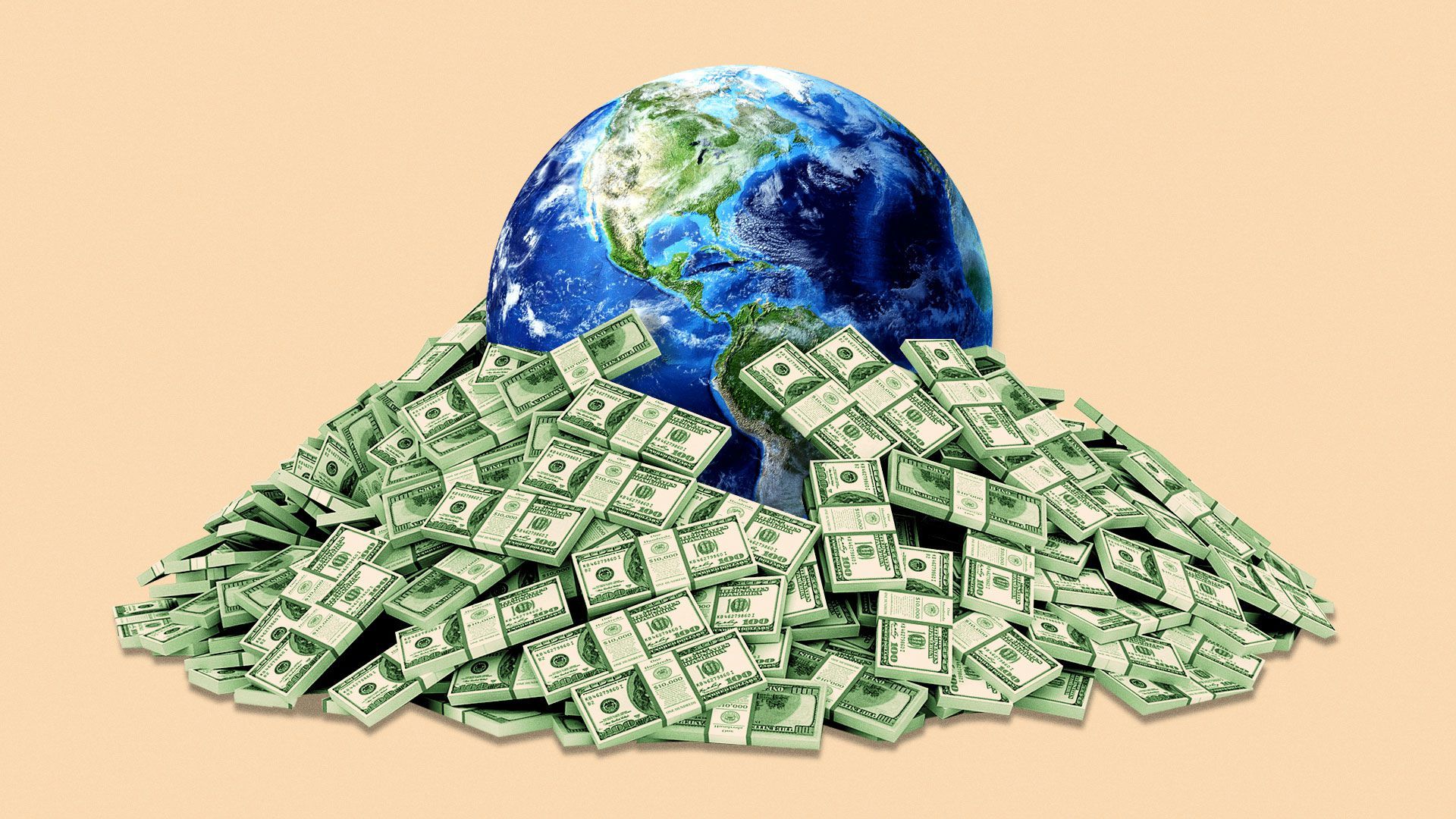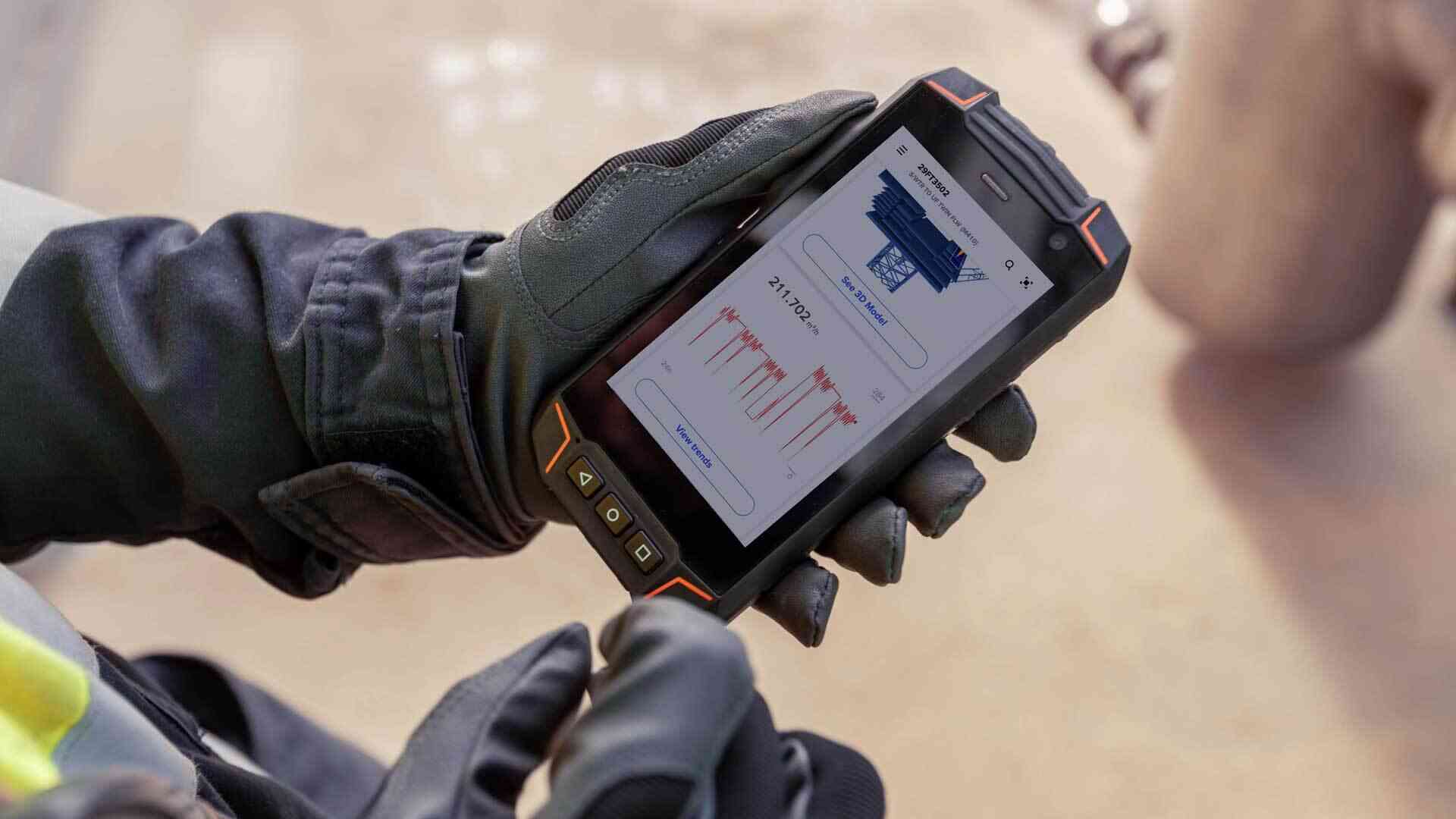| | | | | | | Presented By Cognite | | | | Axios Generate | | By Ben Geman and Andrew Freedman · Oct 17, 2022 | | 🥞 Welcome back! Today's newsletter has a Smart Brevity count of 1,179 words, 4.5 minutes. 🚨Breaking: BP is buying Archaea Energy, which captures gas from farms and landfills, in a $4.1 billion deal that signals BP's latest diversification efforts. Go deeper. 🎶 And happy birthday to Ziggy Marley, a childhood favorite of Ben's son. He's got today's intro tune... | | | | | | 1 big thing: Coping with stronger hurricanes |  | | | Illustration: Annelise Capossela/Axios | | | | The more the planet warms, the more likely it is that the U.S. will be unable to fully offset the economic damages from stronger, wetter hurricanes, a new study finds, Andrew writes. Why it matters: It is a warning that domestic supply chains need to be better prepared for worsening storms. Driving the news: The study, published this morning in Environmental Research Letters, arrives just after Hurricane Ian struck southwest Florida, becoming one of the most expensive storms in U.S. history. Zoom in: The research focuses on how the impacts from Hurricane Harvey, which inundated Houston in 2017, might change as global average temperatures continue to increase. - Harvey caused $125 million (in 2017 dollars) in total damage, the study states.
- The researchers find that as storms grow wetter and more intense due to climate change (though they may be fewer in number), the economic consequences could overwhelm even the richest economies.
- "Our calculations show, for the first time, that the US economy as one of the strongest on our planet, will eventually not be able to offset the losses in their supply chains on their own," lead author Robin Middelanis of the Potsdam Institute for Climate Impact Research said in a statement.
Yes, but: This does not mean that stronger hurricanes will send the U.S. into an economic tailspin. Rather it signals bigger ripple effects to come throughout the U.S. economy and beyond when future hurricanes do strike. - Supply chains in one part of the U.S. could take such a big hit that factories in other parts of the country would not be able to fully offset the lost production, the study finds.
- This could raise prices for consumers, akin to what's happening with supply chain woes today.
Meanwhile, scientists are on the verge of making significant strides in predicting hurricanes, which could help blunt their increasing impacts somewhat, Andrew writes with Jennifer A. Kingson for the What's Next newsletter. Where it stands: Today's monitoring systems are good at predicting a storm's track, but struggle to anticipate intensity changes. - To improve predictions, scientists need more information about hurricanes' relatively small cores. Right now, those are mainly sampled by human-flown Hurricane Hunter aircraft.
What's happening: In recent firsts, uncrewed airborne and seaborne drones have transmitted live data and video from inside these violent storms, including areas off limits to Hurricane Hunters. - The drones complement advanced satellites (including a planned private-sector network) and a new hurricane forecasting model the National Oceanic and Atmospheric Administration aims to adopt next year.
Read the whole story. |     | | | | | | 2. The U.S. won't soon replace those OPEC+ barrels |  Data: U.S. Energy and Information Administration; Note; WTI futures prices; Chart: Tory Lysik If the recent past is prologue, don't look for a surge in U.S. oil output in response to the OPEC+ pullback despite attractive prices, Ben writes. The big picture: U.S. production has climbed back after collapsing during the depths of the pandemic, but remains well below the pre-COVID peak of nearly 13 million barrels per day. As you can see above, output growth has lagged far behind the price revival. What we don't know: How much growth occurs going forward. The production revival has plateaued at around 12 million barrels per day (bpd) in recent months, per Energy Information Administration data. However, EIA still sees more U.S. output ahead. Its most recent monthly report trimmed growth projections but still sees an average of almost 12.4 million bpd next year. 🔭 What we're watching: Oil companies' third-quarter earnings calls in the weeks ahead should provide more clues about production plans. What they're saying: "Oil output from shale basins is at risk of peaking in just two years as drillers combat rising costs," Bloomberg reports, summarizing a note from the consultancy Energy Aspects. 🏃🏽♀️Catch up fast: A suite of forces have acted as a check on U.S. output growth, ranging from costs to investor demands for restraint. Industry officials also argue White House policies are slowing investment. |     | | | | | | 3. Oil and mining sectors have climate cash to spare |  | | | Illustration: Eniola Odetunde/Axios | | | | Big industries could steer far more money into climate-friendly investments without jeopardizing their financial stability or shareholder rewards, Goldman Sachs analysts say, Ben writes. How it works: Goldman applies the "spare capacity" concept to green investment, defining it as what's available to deploy "without stretching balance sheets or eliminating return of capital to shareholders." Why it matters: Global investment from public and private sources is not consistent with Paris Agreement goals and other sustainability targets. What they found: The private sector is projected to deploy an additional $900 billion annually over the next decade on climate, clean water and sustainable infrastructure compared to the 2016-2020 average, Goldman argues. - There's an additional $900 billion of annual "spare capacity" the report finds. But it's "highly concentrated" in oil and gas, metals and mining, software, automobiles and semiconductors.
- "Not all industries have spare capacity to increase investment without taking on equity or debt, but some do."
- "This means other sectors may need greater stimulus to ramp up investment vs. what is already on track."
Yes, but: "Just because a company has spare capacity to invest more doesn't mean the market will appreciate it — corporate returns matter," it states. And even if all that spare capacity was deployed overall investment would still greatly lag what's needed for global net zero and other sustainability goals, the report notes. |     | | | | | | A message from Cognite | | Industrial DataOps is an operational necessity | | |  | | | | Industrial DataOps is about breaking down silos and optimizing the broad availability and usability of industrial data. The impact: The new discipline can shorten the time to value of data by making POCs quicker and cheaper to design, offering tools to operationalize and scale them. Learn more. | | | | | | 4. One tech thing: biometric EV entry |  | | | The tiny fingerprint reader (top) and the crystal ball that flips upside down to become a gear shifter are some of the ways Genesis is setting its new electric GV60 apart from other plug-in SUVs. Photo courtesy of Genesis | | | | If you're prone to losing your car keys, don't fret: You won't need them to drive the new Genesis GV60 electric SUV. All it takes is your face — and your finger, Axios' Joann Muller reports. Why it matters: The same biometric technology that unlocks your iPhone is now available in a car, meaning you can leave the key fob at home. The big picture: The feature is just one of the ways that Genesis hopes to stand out in the growing segment for premium electric SUVs. How it works: Instead of a traditional wireless key fob or Bluetooth-enabled phone-as-a-key, the GV60 uses facial recognition and a fingerprint reader to unlock and start the vehicle. Keep reading. |     | | | | | | 5. What we're watching: fires and floods |  | | | A flooded street in the Melbourne suburb of Maribyrnong, Australia, on Oct. 14. Photo: William West/AFP via Getty Images | | | | Authorities in southwest Washington ordered evacuations for thousands of homes as a wind-driven wildfire rapidly grew on Sunday amid record heat for this time of year, Axios' Rebecca Falconer writes. The big picture: An unusually high number of wildfires for mid-October is burning in the Pacific Northwest, Intermountain West and Canada, as much of the Western United States faces "above normal temperatures and minimum relative humidity," per the National Interagency Fire Center. Meanwhile... in Australia, floods have forced the evacuations of tens of thousands and entire towns are being cut off due to the high water, Rebecca reports. - Victoria, Australia's second-most populous state, is expecting more rain, with multiple flood peaks on different river systems.
- Climate change is increasing the odds and severity of heavy precipitation events.
- La Niña conditions again present in the Pacific are also fueling extreme weather that's hitting Australia, according to climate scientists and the country's Bureau of Meteorology.
|     | | | | | | 6. 🛢️Quoted | | "I've never seen such a spicy bouillabaisse of ingredients that could wreak havoc on energy prices." — Tom Kloza, top analyst with the Oil Price Information Service The comment arrives in this New York Times piece about the mix of forces tugging oil and natural gas prices in both directions. |     | | | | | | A message from Cognite | | Industrial DataOps is an operational necessity | | |  | | | | Industrial DataOps is about breaking down silos and optimizing the broad availability and usability of industrial data. The impact: The new discipline can shorten the time to value of data by making POCs quicker and cheaper to design, offering tools to operationalize and scale them. Learn more. | | | | 📬 Did a friend send you this newsletter? Welcome, please sign up. 🙏Thanks to Mickey Meece and David Nather for edits to today's newsletter. We'll see you back here tomorrow! |  | | Why stop here? Let's go Pro. | | | | | | Axios thanks our partners for supporting our newsletters. If you're interested in advertising, learn more here.
Sponsorship has no influence on editorial content. Axios, 3100 Clarendon Blvd, Arlington VA 22201 | | | You received this email because you signed up for newsletters from Axios.
Change your preferences or unsubscribe here. | | | Was this email forwarded to you?
Sign up now to get Axios in your inbox. | | | | Follow Axios on social media:    | | | | | |









No comments:
Post a Comment